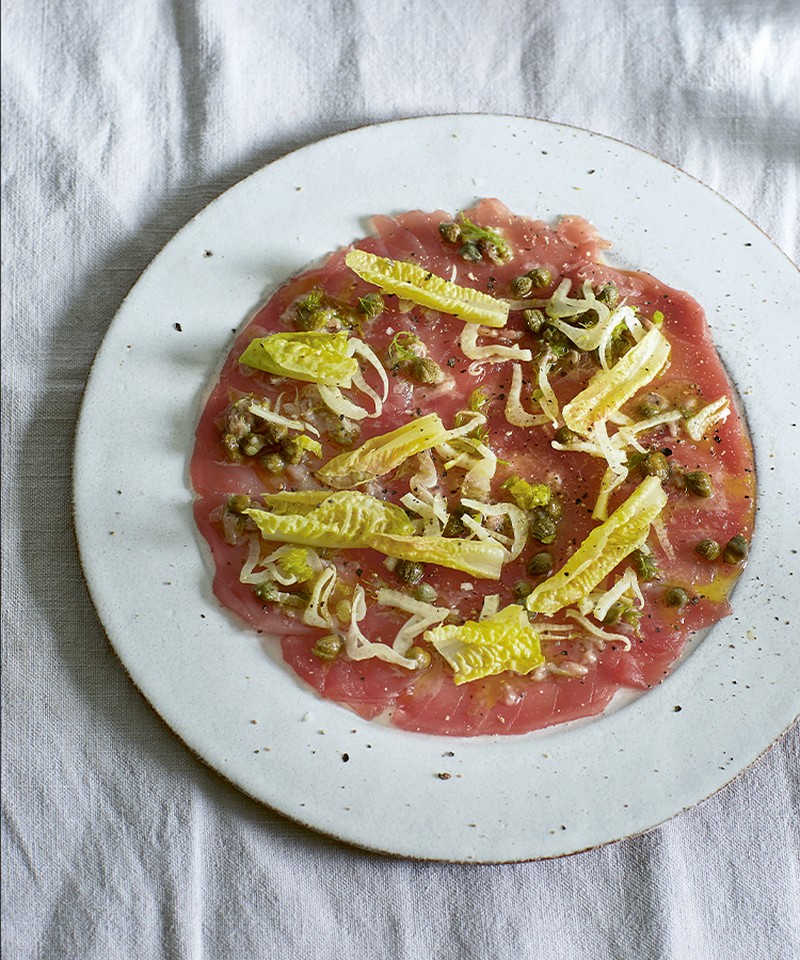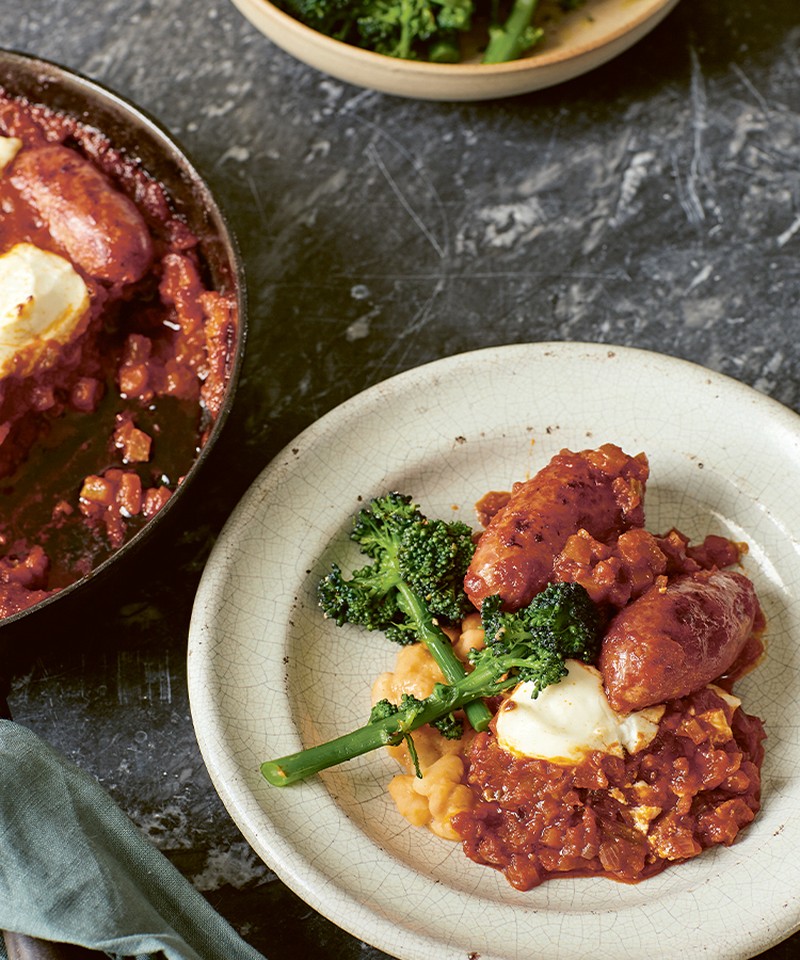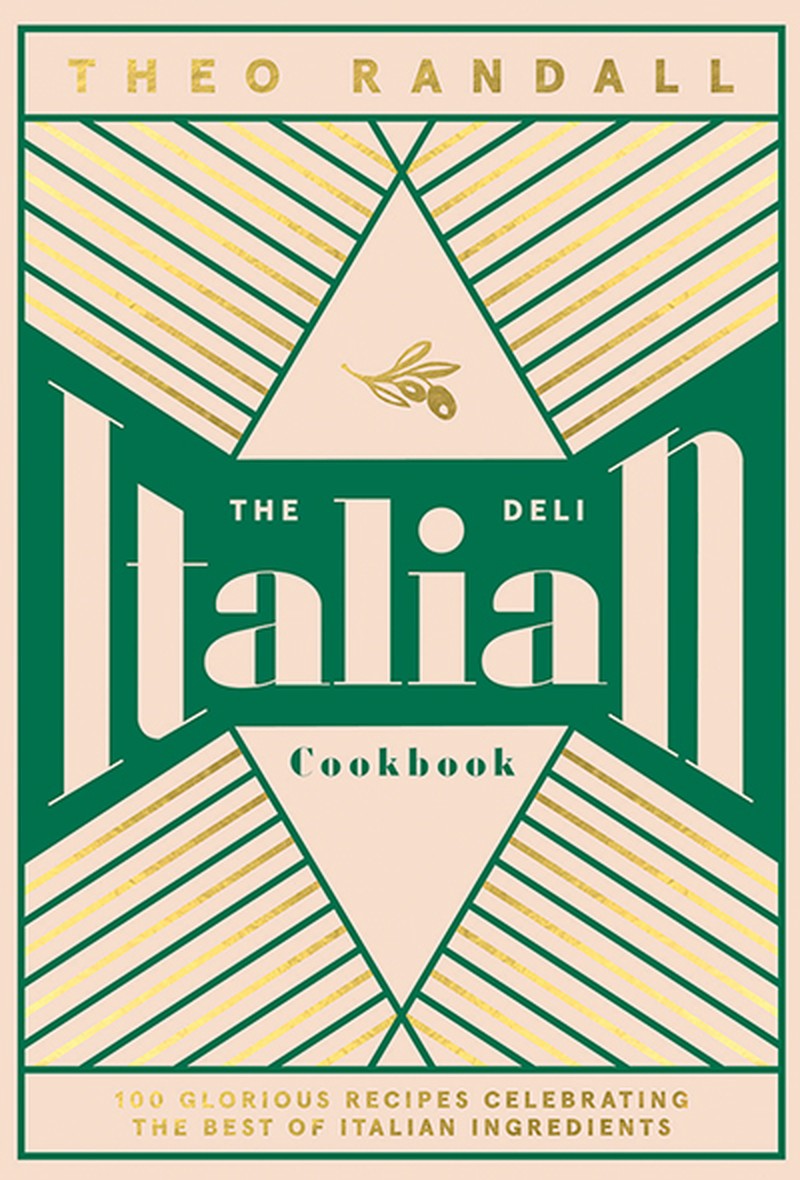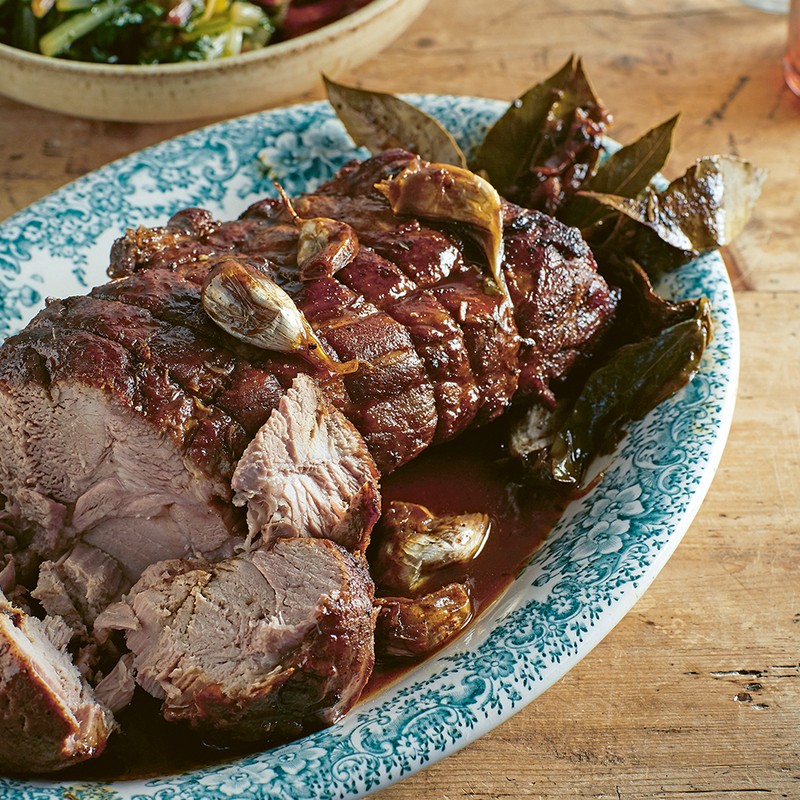How To Cook Italian Food Well At Home

I find myself looking in my cupboards for inspiration regularly. There’s always something that pops out; it could be a tin of anchovies or a jar of olives that gets me thinking. This kind of instinctive cooking is something I have always known. Growing up, our kitchen cupboards were full of goodies that had been picked up on summer holidays. We’d drive to France and Italy and, on the return trip, the back of the car and trailer would be laden with olive oil, wine and ingredients that were impossible to find in 1970s London.
My mother Rosemary was an artist by trade but a natural cook. She taught me that cooking is instinctive and must be seasonal. I can picture her coming home, not from the supermarket but from the open market in Kingston upon Thames, arms laden with bags full of fruit, vegetables, fish, offal, you name it. Our cellar was brimming with wines and jars of homemade preserves and jams. On country walks, she would pick sloes to make gin; in autumn she would pickle the walnuts from the big tree in the garden. I was always the odd kid at school bringing homemade bread and gorgonzola sandwiches for my packed lunch.
I wrote this book during the first lockdown when we were all at home wondering what to cook with limited availability of supplies. This made testing recipes difficult, but it did make me realise how important it is to be well stocked with those little extras that make all the difference to a dish. For instance, I always find myself going to particular delis that sell certain brands of dried pasta, olive oil, passata or olives, because I never want to be without those particularly trusted items, those store-cupboard ingredients that will transform a plate of food.
Delis don’t have to be expensive. Whenever I walk past an interesting food shop, I will go in and buy something totally random and use that item as inspiration to cook something. This is, I think, a really rewarding way to cook.
This book is intended as a tribute to the Italian deli. First arriving on foreign shores along with Italian émigré communities, these delicatessens were a lifeline for Italians missing the food of their homeland. Bizarrely, as recently as the 1970s, olive oil in Britain was only available in chemists, which sold it to treat ear complaints. My first recollection of an Italian deli was when my mother brought home a piece of fresh parmesan and grated it over a bowl of pasta for me. The flavour was so different to anything I’d had before. It made me realise that authentic, fresh ingredients were crucial in the final flavour of a dish. And this ethos is what Italian cooking is built on: simple food made using exceptional ingredients.
The charm and success of the Italian deli comes down to their authenticity, dependability and transformative ingredients – forever staying true to the cooking and eating philosophies of Italy. We should never underestimate their value and should continue to support them whenever possible.
Inspired? Here are four of Theo’s recipes to try yourself…

Tuna Carpaccio With Fennel & Lemon
Yield: Serves 4 as a starter
Total Time: 20 Minutes
Popularised by Japanese cuisine, raw tuna is often served as a wonderful sashimi with soy and wasabi. In this Mediterranean version, the anchovies, capers and fennel provide heaps of flavour. It makes a perfect starter for a dinner party as you can plate the tuna well in advance, cover with cling film and refrigerate until your guests are seated. When you’re ready to serve, finish off with the sliced fennel, anchovies and capers. I’ve always thought the secret to a successful dinner party is to make it as effortless as possible.
INGREDIENTS
- 500g of tuna fillet, whole or cut into steaks
- 50g of salted anchovies in oil, drained and finely chopped
- 75g of miniature capers in vinegar, drained
- Juice of 1 unwaxed lemon
- 3 tbsp of good olive oil
- 1 small fennel bulb
- 1 baby gem lettuce
- Freshly ground black pepper
- Thinly sliced sourdough, toasted, to serve
METHOD
1. With a sharp knife, cut the tuna into thin slices – don’t worry if the slices are uneven, just cut them and divide the slices equally between 4 plates.
2. Cover each plate with a sheet of baking parchment and push down on each with your fingertips to press the tuna slices into an even thickness.
3. Place the anchovies in a bowl with the capers, lemon juice and olive oil.
4. Trim the green fronds from the fennel bulb, then strip away the outer leaves and discard. Cut the fennel bulb in half. With the cut sides of the fennel bulb downwards on a chopping bard, shave thin slices of fennel using a sharp knife. Place these in the bowl with the anchovies, capers, lemon juice and olive oil. Mix together to combine.
5. Remove the baking parchment from the plates of tuna and divide the fennel mixture equally between each plate. (Don’t clean the bowl at this stage.)
6. Remove the outer leaves of the baby gem (reserve for another time) to leave you with the crisp heart. Cut away the base to release the leaves and place these in the bowl that contained the fennel mixture. Stir the leaves through the residual dressing in the bowl and then place a few on each plate. Finish with a grinding of black pepper and serve with toasted sourdough.

Paccheri With Prawn, Courgette & Parsley Sauce
Yield: Serves 4
Total Time: 15 Minutes
This is my son Max’s favourite dish. Whenever he is home it’s only a matter of hours before he asks me to make it – he has good taste! When cooked, the paccheri (hearty, thick tubes of pasta) go flat and somehow the new shape and texture sucks up all the cooking juices of the prawns, tomatoes and courgettes. You need to slice the courgettes into matchsticks for this recipe, but it’s not as fiddly as it sounds. Slice into 1cm rings, then place three rings on top of each other and slice downwards in 1cm widths. Easy!
INGREDIENTS
- 350g of paccheri
- 3 tbsp of olive oil
- 1 garlic clove, finely sliced
- 2 courgettes, cut into 1cm matchsticks
- 150g of baby plum tomatoes, halved
- 1 tbsp of flat-leaf parsley leaves, finely chopped
- 250g of uncooked prawns, halved lengthways (frozen are fine)
- 75ml of dry white wine
- Sea salt and freshly ground black pepper
METHOD
1. Bring a large pan of salted water to the boil. Add the paccheri and boil for 2 minutes less than the packet instructions, until very al dente.
2. Meanwhile, make the sauce. Gently heat 2 tablespoons of the oil in a large non-stick frying pan on a medium heat. When hot, add the garlic and courgettes. Cook for 3 minutes to soften, then add the tomatoes, parsley and halved prawns. Season with salt and pepper, add the white wine and cook on a medium heat for about 3 minutes, until the liquid has reduced by half.
3. Once the pasta is ready, using a slotted spoon or small sieve, transfer it to the sauce. Add a ladleful of the pasta cooking water and cook for a further 2 minutes, until the sauce becomes syrupy. Add the final tablespoon of olive oil and check the seasoning. The pasta should have a lovely bite to it and it should be coated in the sauce. Serve in warmed pasta bowls.

Roasted Italian Sausages With Borlotti Beans & ’Nduja Sauce
Yield: Serves 2
Total Time: 1 Hour 20 Minutes
Dried borlotti beans from the protected area of Lamon, in the Veneto, are the finest dried borlottis available. You don’t have to use these specifically, of course, but if you are lucky enough to come across a packet, you are in for a treat. Combined with lovely, flavoursome sausage and the spiciness of ’nduja, they are heavenly. Make sure you have a good bottle of chianti, or other super Tuscan red wine to drink alongside – it’s essential.
INGREDIENTS
- 250g of dried borlotti beans, soaked overnight in plenty of cold water
- 2 garlic cloves, 1 whole, 1 finely sliced
- 1 plum tomato
- 2-3 sage leaves
- 3 tbsp of olive oil
- 4 Italian sausages
- 2 celery sticks, finely chopped
- 1 red onion, finely chopped
- 2 carrots, peeled and finely chopped
- 100ml of red wine
- 400g of tomato passata
- 75g of skinned ’nduja
- 2 tbsp of mascarpone
- Sea salt and freshly ground black pepper
- 200g of purple sprouting, calabrese or longstem broccoli, cooked and seasoned with olive oil, sea salt and freshly ground black pepper, to serve
METHOD
1. Drain the soaked beans and rinse under cold, running water for a couple of minutes. Place the rinsed beans in a large saucepan and pour in cold water so that the water comes 10cm above the level of the beans.
2. Add the whole clove of garlic, along with the plum tomato and sage leaves. Place over a high heat and bring to the boil. Reduce the heat to a simmer and cook gently for 40 minutes, skimming off the foam from time to time, until the beans are soft enough to crush to a mash with your thumb. Drain the beans, reserving the cooking water. Remove the tomato, sage and garlic and place them in a bowl. Using a hand-held stick blender and a little of the bean cooking water, blend to a smooth paste. Add the paste back to the beans and check the seasoning. Set aside.
3. Preheat the oven to 160°C/140°C Fan/Gas Mark 2-3.
4. Heat 2 tablespoons of the olive oil in an ovenproof frying pan on a medium heat. When hot, add the sausages and cook for 5 minutes, turning frequently, until brown all over. Remove them from the pan and set aside, leaving the sausage fat and olive oil in the pan.
5. Add the celery, sliced garlic, onion and carrots to the pan and cook gently for 5 minutes, until the onion has softened. Add the red wine and cook for a further 2 minutes until the liquid has reduced by half. Add the passata, cook gently for a couple of minutes, then add the ’nduja and stir well.
6. Place the sausages on top of the passata mixture and bake in the oven for 15 minutes, until the sausages are cooked through. Remove from the oven, dollop over the mascarpone and check the seasoning.
7. Warm the cooked borlotti beans and stir through the remaining olive oil.
8. Place on the table for everyone to help themselves, with some steaming hot purple sprouting broccoli served alongside.

Slow-Cooked Pork Shoulder With Roasted Squash & Rainbow Chard
Yield: Serves 6
Total Time: 2 Hours 30 Minutes
Pork shoulder may be the cheapest cut of pork, and it takes time to cook, but it’s probably the best. Make sure you baste the meat, which not only tenderises it, but also makes the base for a wonderful sauce. The combination of the sweet, roasted squash and earthy rainbow chard is the perfect accompaniment – imagine, as I do, a long, cold walk in the countryside, then coming home to the mouth-watering smells of roasting pork and some very hungry, expectant faces...
INGREDIENTS
- 2kg of skinless, boned pork shoulder (fat on)
- 75g of unsalted butter
- 100ml of red wine vinegar
- 150ml of white wine
- 7 garlic cloves, peeled but left whole
- 8 bay leaves (fresh or dried)
- 1kg of butternut or onion squash, peeled, deseeded and cut into 2cm pieces
- 1 tbsp of olive oil, plus extra for the squash
- 1 tsp of chopped thyme leaves (not lemon thyme)
- 500g of rainbow chard, leaves and stalks separated
- 1 tbsp of chopped mint leaves
- Sea salt and freshly ground black pepper
METHOD
1. Preheat the oven to 160°C/140°C Fan /Gas Mark 2-3. Season the pork all over with salt and pepper and remove any string tying it together.
2. Heat a large, heavy-based casserole dish on a medium heat. When hot, add the butter and allow to melt. Place the pork, fat-side downwards in the butter, and leave to cook until the fat has turned golden brown (about 5 minutes). Turn over the pork and cook for a further 5 minutes, until the other side has coloured too. When the pork is golden brown all over, remove from the pan and discard the butter.
3. Wipe out the dish with some kitchen paper, increase the heat and add the red wine vinegar. Bring to the boil and leave to bubble away until reduced by half (about 5 minutes). Add the white wine, 6 cloves of garlic and bay leaves and bring back to the boil. Turn off the heat and place the browned pork in the dish, fat-side upwards. Cover with foil and make a small hole in the top to let out some steam. Cook in the oven for 2 hours, turning over the pork a couple of times during cooking. (If at any point it looks like there is not enough liquid in the pan, add a cupful of water.)
4. While the pork is cooking, toss the squash in a bowl with some olive oil and the chopped thyme. Season with salt and pepper. Transfer to a roasting tin, loosely cover with foil, and place in the oven with the pork for 40 minutes, until tender. Check by piercing with a sharp knife – if there is no resistance, remove the foil and place back in the oven for a further 15 minutes or until the squash has gone lightly golden.
5. Bring a pan of salted water to the boil. Chop the chard stalks to 1cm thick and cut the leaves into 3cm slices. Boil the chopped stalks for about 2 minutes, until tender. Use a slotted spoon to remove from the pan and keep to one side. Add the leaves to the cooking water and boil for 1 minute, until tender. Drain and set aside.
6. Place the hot, empty saucepan back on the heat and add 1 tablespoon of olive oil. Peel and slice the remaining clove of garlic and add it to the pan. Cook for 30 seconds to soften, but do not colour. Add the chard stalks and cook for 5 minutes, then add the leaves and cook for 2-3 minutes. Check the seasoning and stir through the tablespoon of chopped mint. Set aside.
7. Once the pork has been cooking for 2 hours, remove it from the oven and use a spoon to push down on it – it should just fall apart. If not, cook for a further 30 minutes and check again.
8. Baste the pork really well in the casserole with the cooking liquid for at least 5 minutes. This will season the pork and really tenderise it. Remove the pork from the casserole dish and place on a large, warmed serving plate. Keep warm.
9. Place the casserole dish on a medium heat and bring the liquid to the boil. Allow it to bubble away until reduced by half.
10. Serve the pork in the middle of the table with the sauce poured over (there’s no need to remove the bay and garlic – it’s all part of the charm). Carve the pork at the table and serve the squash and chard on the side.

The Italian Deli Cookbook by Theo Randall (Quadrille, £26). Photography: Lizzie Mayson.
DISCLAIMER: We endeavour to always credit the correct original source of every image we use. If you think a credit may be incorrect, please contact us at [email protected].


